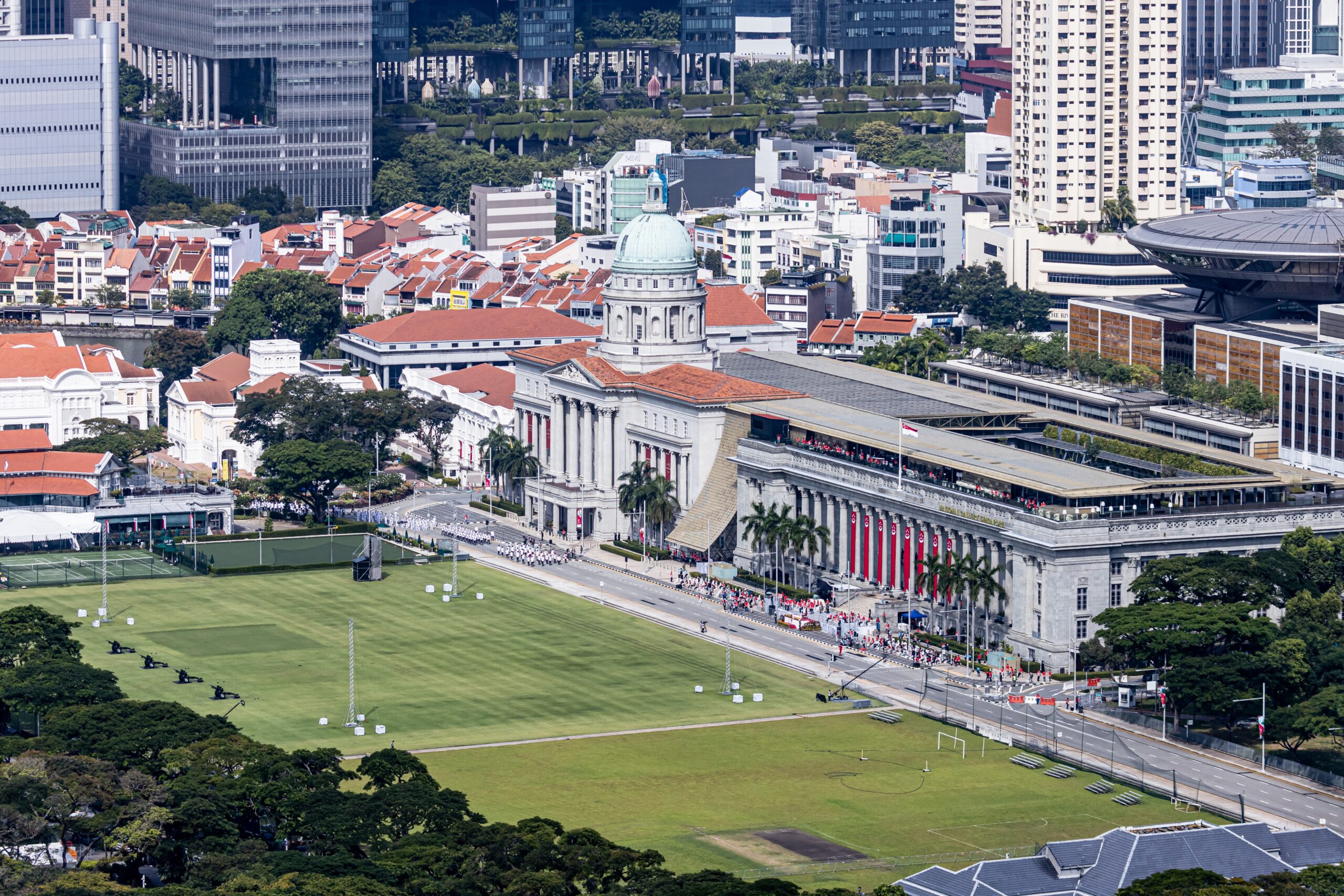The curriculum/course on Geography is developed in a way that makes it easier for both teachers and learners to use.
GEO 111 INTRODUCTION TO PRACTICAL GEOGRAPHY 3C
Types and features of maps, maps and scales, conventional signs, measurement, reduction and enlargement; recognition of relief forms in contour and drainage analysis, presentation of geographical data; isoline maps, choropleth maps, dot maps, and flow maps.
GEO 112 INTRODUCTION TO ELEMENTS OF HUMAN GEOGRAPHY 3C
Nature and scope of Human Geography; Man and his environment; General characteristics of the World population and growth trends. Relationship between world trends and trends and Agricultural resource and energy development.
Evolution of sedentary agriculture and its link with settlement types and their characteristics. Mining activity and its impact on the cultural impact on the cultural landscape,
GEO 113 INTRODUCTION TO ELEMENTS OF PHY.GEOGRAPHY 3C
The composition and structure of the lithosphere, atmosphere and hydrosphere. Nature, distribution, evolution and significance of the First Order Relief Forms of the Earth.
The Earth’s radiation, atmospheric and Oceanic Circulation systems. Introduction to the cycling of platters and energy in ecosystems.
GEO 121 GENERAL SURVEY OF AFRICA CONCERNING NIGERIA 3C
Tropical studies concerning the environmental resources of Nigeria: structure, landform, drainage, minerals, climate, soils and vegetation:
The people, their culture, history and systems of resource utilisation; population pattern, agricultural, mineral, and water development; urbanisation and transportation problems. Nigeria as a political entity. Challenges for future development.
GEO 122 GEOGRAPHY OF LOCAL ENVIRONMENT 3C
The regional setting of your locality and its environs, its physical geography, its relief, drainage, soils and climate.
The human geography of the region includes settlement, ancient and modern political organisation, transport, industries, urbanisation, trade, residential neighbourhoods, social institutions and facilities.
GEO 123 ELEMENTARY SURVEYING 3C
Elementary surveying instruments and their uses. Surveying techniques involving the use of chains, compass traversing, plane tabling and levelling. Map making (Plotting) from ground survey data.
GEO 211 MAP READING INTERPRETATION AND ELEMENTARY AIRPHOTO INTERPRETATION 3C
Representation of Data features and phenomena on maps. Statistical illustration of physical features and human elements graphs, bar, pie, choropleths, etc. Statistical mapping of data Distribution; density spheres, circles, pictorial maps.
Types and uses of aerial photographs. Advantages and disadvantages of aerial photographs. Instruments and Techniques for air photo interpretation, Comparison between maps and aerial photographs.
GEO 212 SPATIAL ORGANISATION OF HUMAN SOCIETY 3C
Some basic concepts of spatial organisation: Principles of classification of Geographic allocation, spacing and growth of settlement; movements over space and transport network. Land use, topology, patterns and interaction.
GEO 213 INTRODUCTORY GEOMORPHOLOGY AND SOIL GEOGRAPHY 3C
The meaning and scope of geomorphology: Rock types, their origins, characteristics and economic importance. Nature and origin of second-order relief forms of the continents. Structural landforms.
The meaning and scope of soil geography. Factors of soil development: zonal soils, a-zonal soils and intra-zonal soils.
GEO 221 GENERAL SURVEY OF WEST AFRICA 3C
This course involves a holistic treatment of the Water African Sub-region, and its natural and human resources – size, location, relief features, water resourcesclimateic, and vegetation.
Soil, water problems, agriculture development, mining, industrialisation, population, urbanisation transportation problems change with the development of resources in West Africa.
An in-depth treatment of the prospects and problems of rational cooperation, especially in the ECOWAS.
GEO 222 INTRODUCTION TO CLIMATOLOGY AND BIOGEOGRAPHY 3C
The general circulation of the atmosphere, scales and lows of motion. Forces that drive the atmosphere. Major features and models of the circulation. Weather-producing sys-tem-air masses and fronts, frontal and non-frontal depressions, and tropical systems.
Climate classification and global systems of climate. Man’s influence on the atmosphere. Basic structure and dynamics of plant growth, survey of characteristics, distribution and controlling factors of principal or zonal vegetation types. Man’s influence on vegetation.
GEO 223 ELEMENTARY STATISTICS FOR GEOGRAPHERS 3R
The place of statistics in research. Review of algebraic operations. Subscripts and summations. Data description and characteristics. Frequency distributions and graphics presentation. Measures of central tendency and variability. Methods of sampling. Introduction to computer programming.
GEO 311 QUANTITATIVE METHODS IN GEOGRAPHY 3C
Comprises two parts: statistics and spatial analysis. The statistical part will deal with the nature of raw data, calculation and use of deviation and variability, probability theory, and methods of sampling.
Comparison of samples; non-parametric and comparison of samples; nonparametric and parametric tests. Regression and correlation series analysis. The spatial sampling, description of point, pattern, chi-square analysis, and nearest neighbour analysis.
GEO 312 GENERAL SURVEY OF AFRICA 3C
Size, location and structure of Africa, major relief and drainage systems. Climate, population, urbanisation, and transportation problems are emerging from the development of resources in one of the following regions.
North, Central, East and South Africa. In-depth treatment of the problems and prospects of regional cooperation, especially the OAU.
GEO 313 INTRODUCTORY CARTOGRAPHY 3C
History of maps, techniques of map making, types, design and construction of physical and economic maps, basic contour compilation, profiles, flow maps, pie graphs, bar graphs, map projection and lettering techniques.
GEO 314 THE TEACHING OF GEOGRAPHY 3C
A consideration of different classifications of educational objectives and their application in Geography teaching. Concepts, models, games and simulations in the teaching of Geography.
Types of practical work and their relevance as teaching techniques in Geography. Some aspects and techniques in the teaching of physical and human geography. Statistical techniques in the teaching of Geography.
Geography in the integrated curriculum in Education, to the teaching of Geography, especially the development of logical thinking, and micro-teaching exercises.
GEO 315 POPULATION GEOGRAPHY 3R
Population data as vital statistics. Procedure and problems of population data collection, including census. Historical outline of world population growth.
The pattern of population distribution and trends of change. Theories and concepts of population. Determinants and spatial aspects of morality, fertility and migration.
GEO 316 TRANSPORT GEOGRAPHY 3R
The scope and method of transportation geography evaluation of the various models of transport. Transportation models.
Structural analysis of transportation networks. Transport and economic development. Transport land use studies. Transportation planning. Traffic theories.
GEO 317 SETTLEMENT GEOGRAPHY 3R
Origin of settlement; concept of profiteer settlement, models of colonisation and growth of settlement, the issue of agriculture; the tenure and land reforming, land settlement and re-settlement schemes; the rise and diffusion of urban culture, rural-urban fringe.
GEO 321 BIOGEOGRAPHY 3C
Vegetation types. Factors affecting flora and fauna distribution lit various scales. The concept of ecosystems. The structure and functioning of terrestrial and aquatic ecosystems. Vegetation changes through time: adaptation, succession and climax.
GEO 322 URBAN GEOGRAPHY 3C
History of Urbanisation, the pre-industrial and the modern city; factors and effects of Urbanisation; Urban function and Land-Use regions, Models of Urban Structure; Urban regions, Urban Fields, Town and Country Planning. Concept of Central Places.
GEO 323 GEOMORPHOLOGY OF HUMID TROPICS 3C
The concept of the tropics/humid tropical geomorphology. Geomorphologic processes in the humid tropic environment: weathering, removal, and deposition. Humid tropical Geomorphology landforms, Rivers and river patterns. Humid tropical Geomorphology and development.
GEO 324 ECONOMIC GEOGRAPHY 3R
Nature and scope of Economic Geography. Concept of the economic man.. Location of economic activities-Principle of Agricultural and Industrial Location, Location Theory.
The role of transportation in production and distribution. Transportation network characteristics and economic development, Mining activities and their impact on the Nigerian economy.
GEO 325 FIELDWORK IN GEOGRAPHY 6C
8-10 days intensive field studies of physical and human aspects of geography involving collection, processing and interpretation of geographic data, reporting of field findings.
GEO 326 WATER RESOURCES 3E
Role of water as a socio-economic resource; water resources inventory and mapping. Water supply and assessment of the efficiency of the water supply scheme. Impact of improving water supply on rural areas.
GEO 327 AGRIC.GEOGRAPHY AND RURAL DEVELOPMENT 3E
Classical agricultural location model, market system models, probability and behavioural models of agricultural activity.
Agricultural topology. Case studies. The concepts of rural development. The case of Agriculture as a basis for rural development strategies and programmes.

GEO 328 REGIONAL GEOG OF AMERICA OR EAST EUROPE 3E
A thorough study of the regional geography of either North America or Eastern Europe.
GEO 411 APPLIED CLIMATOLOGY 3C
Application of micro-climatology, agro-climatology and Urban climatology to geographical and development studies.
GEO 412 SPATIAL PROCESSES AND DIFFUSION 3C
Geographical space. Language and human awareness. Cognition of the partial Environment. Basic concepts of spatial interaction and movement, communication. Decision-making in migration. The administration of space. Social problems and public policy.
GEO 413 SYSTEMATIC GEOGRAPHY IN NIGERIA 3C
A thematic approach to the geography of Nigeria, focusing on a range of physical and human phenomena; spatial patterns, ecological zones, growth and distribution of population, and natural resources base.
Also, agricultural production and marketing systems, industrialisation, transport development, and internal and external exchange. Concepts and models, river basins, city and community regions, migration flows, urban systems, modernisation, and development strategies.
GEO 414 GEOGRAPHY OF THE DEVELOPING WORLD 3R
The nature of under-development in the third world. Poverty and income distribution. Production system and links with the international economy. Geographical distribution of natural resources, human resources and technology.
Development strategies, agriculture, industrialisation, education and manpower development. The population problem, international trade and transfer of resources.
GEO 415 POLITICAL GEOGRAPHY 3E
Political geography and geopolitics; methodological issues, the elements of politics, geography; the rise of the nation and the growth of the states; the concept of the nation of the state.
The power structure and organisation of the state, internal administration. The nationalism, capitalism, communism, socialism and development, problems of small politico-geographical realities, national, sub-regional, continental and the entire world,
GEO 412 GEOGRAPHY OF THE DEVELOPED WORLD 3R
Geographical space. Language and human awareness. Cognition of the partial environment. Basic concepts of spatial interaction and movement, communication. Decision-making in migration. The administration of space. Social problems and public policy.
GEO 413 SYSTEMATIC GEOGRAPHY IN NIGERIA 3C
A thematic approach to the geography of Nigeria, focusing on a range of physical and human phenomena; spatial patterns, ecological zones, growth and distribution of population, natural, transport development, and internal and external exchange.
Concepts and models, river basins, city and community regions, migration flows, urban systems, modernisation, and development strategies.
GEO 414 GEOGRAPHY OF THE DEVELOPMENT 3R
The nature of under-development in the third world. Poverty and income distribution. Production system and links with the international economy. Geographical distribution of natural resources, human resources, and technology.
Development strategies, agriculture, industrialisation, education and manpower development. The population problem, international trade and transfer of resources.
GEO 415 POLITICAL GEOGRAPHY 3E
Political geography and geopolitics; methodological issues, the element of political geography; the rise of the nation and the growth of the states; the concept of the nation and the growth of the state; the concept of the nation.
Territory, resources and population of the state. Power structure and organisation of the state, internal administration.
The concept of territoriality. Location of the state and policies of development; colonialism, nationalism, capitalism, communism, socialism and development, problems of small and landlocked states.
Mackinder’s heartland and global geopolitical hypothesis, emerging politico-geographical realities, national, sub-regional, continental and the entire world.
GEO 421 GEOGRAPHY OF THE DEVELOPED WORLD
Differentiation of the developed world from the developed world. Distribution of incomes and standards of living.
Social, economic and political frameworks of the capital- geographical bases of the economics. Geographical bases of the economies of Western Europe, the U.S.A. and Russia, growth implications on the world economy.
GEO 422 CONTEMPORARY PHILOSOPHY AND METHODOLOGY IN GEOGRAPHY 3C
The current methodology of geographical research includes recent paradigm shifts within geography, scientific approach to geographic research, quantification in geography, classification in geography, theories and models in geography, and systems analysis in geography.
GEO 423 ORIGINAL RESEARCH PROJECT 4C
A long essay of about 10,000 words on an approved topic involving the analysis and interpretation of a set of relevant raw data collected by the student. Do more research.










